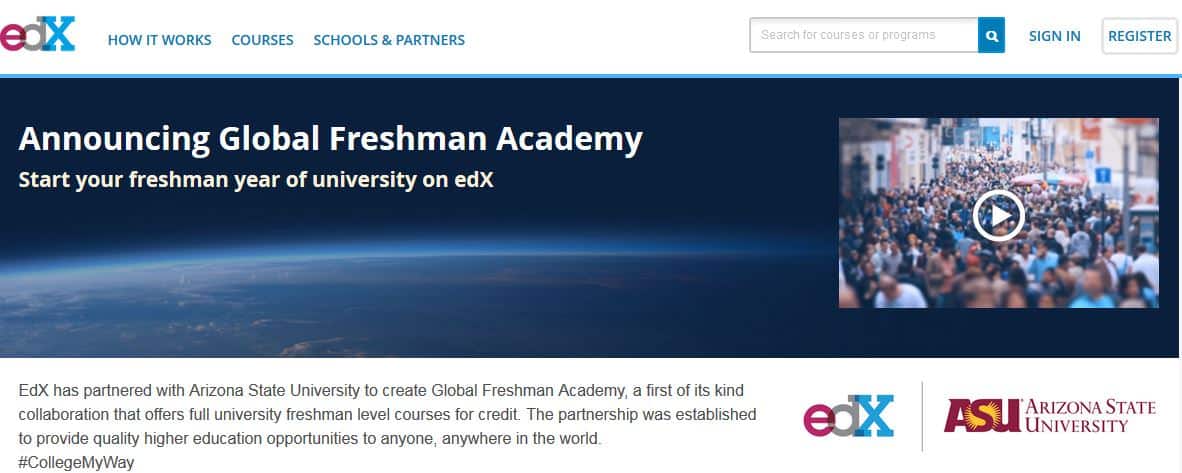Blended learning moving to centre stage in higher education
For the past several years, experts and higher education practitioners have been touting the benefits of marrying online and traditional face-to-face learning. This approach - generally referred to as "blended learning" - has become more prominent in higher education in recent years and typically combines aspects of both digital and in-person pedagogy. The 2015 New Media Consortium (NMC) Horizon Report points out that one in ten higher education students in the US were taking courses exclusively online as of 2012. An even higher percentage (13.3%) were combining online and face-to-face classes. "Drawing from best practices in online and face-to-face methods, blended learning is on the rise at universities and colleges," says the report. A related commentary from Edudemic concurs and adds, “Blended learning may be the even bigger innovation to come of the shift to online learning, as it combines the benefits of the technology of online learning with the accessibility of working with teachers face-to-face. Access to more online resources in whatever format students learn from best, accessible wherever and whenever they want, enables better learning outside of the classroom. Add to that a greater availability of teachers once in the classroom and you have a powerful tool that provides students with the best of both worlds.” According to a recent blog post in The Chronicle of Higher Education, online learning models have achieved greater prominence in recent years as elite universities - including many Ivy League schools in the US - have begun to more substantially adopt the tools and approaches of digital learning. The post outlines three major online trends that will figure into the future of higher education and which set the stage for the increasing footprint of blended learning programmes. The first involves the rapid expansion of MOOCs - free online courses made accessible and available to everyone - as a way for elite universities to boost their brand and profile, particularly in overseas markets. The second trend points to the growth in paid online courses for niche graduate programmes. The Yale School of Medicine, for example, recently began to offer an online version of its graduate programme for physicians’ assistants, a move that will allow it to better serve students in rural communities and expand its enrolment from 40 students to about 300. A third trend - already well underway - is the expansion and integration of online and digital learning technologies within face-to-face undergraduate programmes. But why pair digital learning with more traditional higher education modes, such as lectures, workshops, and classroom teaching? According to Susan Gautsch, Director of Online Learning at the USC Sol Price School of Public Policy, the combination of online and in-person learning is a way to reach students who couldn’t easily pursue a traditional, full-time, face-to-face programme. "I think it certainly meets the needs of people’s lives," Ms Gautsch said recently to US News, noting that many students who take blended learning classes at USC's Sol Price School of Public Policy are professionals with full-time jobs and families. Som Seng, Director of Marketing for UMassOnline, agrees and points out that for some students blended learning is a way back to higher education. "Blended learning can be a great resource for students who may have been out of school for an extended period of time," he says. "It can be a natural transition between everyday life and returning to school."
Boosting academic achievement
There are other important benefits to learning in a blended environment.
According to a recent study of the role technology plays in higher education, student achievement in blended learning environments is greater than in either online or face-to-face learning alone.
In part, the study points to how blended learning often involves additional time, instructional resources, and course elements encouraging interaction among learners. Other benefits touted in blended learning programmes are the need for students to better plan ahead, and the ability for students to network more effectively with one another in blended programmes. George Siemens, Executive Director of The University of Texas at Arlington's Learning Innovation and Networked Knowledge Lab, is the lead author of the study, Preparing for the Digital University: A Review of the History and Current State of Distance, Blended, and Online Learning. His report offers an important perspective along with concrete strategies for higher education institutions as they prepare for the digital wave. It also emphasises the importance of drawing from learning sciences research in preparing new models of teaching, learning, and student assessment. One of the main conclusions from the study is that although it seems certain that blended learning boosts academic achievement, the exact blended learning model that may be most effective remains unclear, and best practices are still in the process of being developed. "Over the next decade, even the most conservative systems will begin to adopt a greater range of digital technologies to support student learning and university operation in general," said Mr Siemens in a recent interview with the science news site Phys.org. "To prepare for this transition, we need to first understand the research of learning in online/blended/distance spaces. This is essentially about building a foundation so that we can get past the 'but does online learning work' argument that often arises in the conversations. It works. Now, institutions must begin preparing their systems for the digital movement."
Innovation and disruption
Many higher education institutions have already begun to expand their blended offerings, often collaborating with private and public sector partners in ways that may have been unimaginable only a few years ago.
In one high-profile example, Arizona State University (ASU) and edX, a MOOC partnership between MIT and Harvard, recently announced the Global Freshman Academy, an initiative that will allow students to do their entire first year of an undergraduate programme online.
"The Global Freshman Academy will give learners anywhere in the world the opportunity to earn freshman-level university credit after successfully completing a series of digital immersion courses hosted on edX, designed and taught by leading scholars from ASU," said an announcement on ASU’s website.

Most Recent
-
ICEF Podcast: Together for transparency – Building global standards for ethical international student recruitment Read More
-
New analysis sounds a note of caution for UK immigration reforms Read More
-
The number of students in higher education abroad has more than tripled since the turn of the century Read More
















